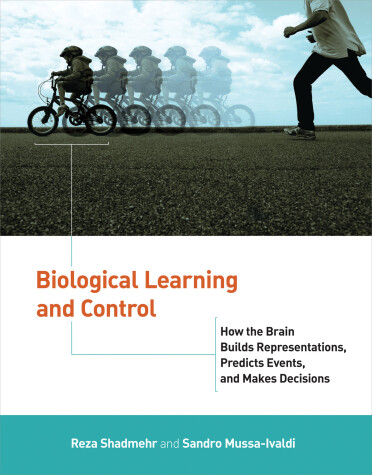Computational Neuroscience
2 total works
The Computational Neurobiology of Reaching and Pointing
by Reza Shadmehr and Steven P. Wise
Neuroscience involves the study of the nervous system, and its topics range from genetics to inferential reasoning. At its heart, however, lies a search for understanding how the environment affects the nervous system and how the nervous system, in turn, empowers us to interact with and alter our environment. This empowerment requires motor learning. The Computational Neurobiology of Reaching and Pointing addresses the neural mechanisms of one important form of motor learning. The authors integrate material from the computational, behavioral, and neural sciences of motor control that is not available in any other single source. The result is a unified, comprehensive model of reaching and pointing. The book is intended to be used as a text by graduate students in both neuroscience and bioengineering and as a reference source by experts in neuroscience, robotics, and other disciplines.
The book begins with an overview of the evolution, anatomy, and physiology of the motor system, including the mechanisms for generating force and maintaining limb stability. The sections that follow, "Computing Locations and Displacements", "Skills, Adaptations, and Trajectories", and "Predictions, Decisions, and Flexibility", present a theory of sensorially guided reaching and pointing that evolves organically based on computational principles rather than a traditional structure-by-structure approach. The book also includes five appendixes that provide brief refreshers on fundamentals of biology, mathematics, physics, and neurophysiology, as well as a glossary of relevant terms. The authors have also made supplemental materials available on the Internet. These web documents provide source code for simulations, step-by-step derivations of certain mathematical formulations, and expanded explanations of some concepts.
In Biological Learning and Control, Reza Shadmehr and Sandro Mussa-Ivaldi present a theoretical framework for understanding the regularity of the brain's perceptions, its reactions to sensory stimuli, and its control of movements. They offer an account of perception as the combination of prediction and observation: the brain builds internal models that describe what should happen and then combines this prediction with reports from the sensory system to form a belief.
Considering the brain's control of movements, and variations despite biomechanical similarities among old and young, healthy and unhealthy, and humans and other animals, Shadmehr and Mussa-Ivaldi review evidence suggesting that motor commands reflect an economic decision made by our brain weighing reward and effort. This evidence also suggests that the brain prefers to receive a reward sooner than later, devaluing or discounting reward with the passage of time; then as the value of the expected reward changes in the brain with the passing of time (because of development, disease, or evolution), the shape of our movements will also change.
The internal models formed by the brain provide the brain with an essential survival skill: the ability to predict based on past observations. The formal concepts presented by Shadmehr and Mussa-Ivaldi offer a way to describe how representations are formed, what structure they have, and how the theoretical concepts can be tested.

